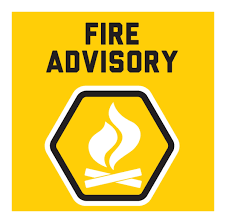Emergency Management
Vulcan county is part of the Regional Emergency Management Partnership, which includes the Town of Vulcan, Village of Carmangay, Village of Champion, Village of Lomond, Village of Milo, and Village of Arrowwood. The ultimate purpose of the Regional Emergency Management Partnership is to work together as one unit to:
- save lives
- preserve the environment
- protect the property and economy
The protection of life is of paramount importance. In the broadest sense, emergency management raises the understanding of risks and contributes to a safer, prosperous, sustainable, and disaster-resilient society in Canada.
Emergency Management is comprised of four interdependent components:
1. Prevention & Mitigation
Eliminate or reduce the risks of disasters in order to protect lives, property, and the environment, and reduce economic disruption. Prevention/mitigation includes structural mitigate measures (e.g. construction of floodways and dykes) and non-structural mitigate measures (e.g. building codes, land-use planning, and insurance incentives). Prevention and mitigation may be considered independently or one may include the other.
2. Preparedness
Be ready to respond to a disaster and manage its consequences through measures taken prior to an event, for example, emergency response plans, mutual assistance agreements, resource inventories and training, equipment, and exercise programs. This pamphlet provides general information on personal and family emergency preparedness for a variety of natural and man-made disasters and emergencies.
Make a list of what to do at home, school, or work if a disaster strikes. Divide up tasks so that every member of your household participates as much as possible. Write down the details and make sure everyone has a copy. Your plan should include the following:
- Where the exits are from your home and neighbourhood
- A meeting place to reunite with family or roommates
- A designated person to pick up your children should you be unavailable
- Close and out-of-town contact persons
- Health information
- A place for your pets and livestock to stay
- The risks in your region
- The location of your fire extinguisher, water valve, electrical box, gas valve, and floor drain
3. Response
Act during or immediately before or after a disaster to manage its consequences through, for example, emergency public communication, search and rescue, emergency medical assistance and evacuation to minimize suffering and losses associated with disasters.
4. Recovery
Repair or restore conditions to an acceptable level through measures taken after a disaster, for example, return of evacuees, trauma counselling, reconstruction, economic impact studies and financial assistance. There is a strong relationship between long-term sustainable recovery and the prevention and mitigation of future disasters. Recovery efforts should be conducted with a view toward disaster risk reduction.
These four interdependent components may be undertaken sequentially or concurrently, but they are not independent of each other. Emergency management in provincial, territorial and federal governments adopts a comprehensive all-hazards approach to coordinate and integrate prevention and mitigation, preparedness, response and recovery functions to maximize the safety of Canadians. Ensuring a strong and seamless relationship across these components and with appropriate emergency management partners is critical to effective emergency management.
Disaster Recovery Programs
Disaster recovery programs provide financial assistance for municipalities and their citizens who incur un-insurable losses and damages as a result of a disastrous event. These programs are an effective way of assisting municipalities by ensuring that the costs of disasters are shared by all Albertans, and whenever possible, by all Canadians through cost-sharing arrangements with the federal government.
A state of local emergency does not have to be declared in order to receive financial assistance under a disaster recovery program.
The Disaster Recovery Program (DRP) is administered by the Alberta Emergency Management Agency (AEMA). AEMA is part of Alberta Municipal Affairs. Alberta Regulation 51/94 of the Alberta Emergency Management Act allows the province to provide disaster recovery assistance to residents, small business, agriculture operations, and provincial and municipal governments if the event meets the criteria as outlined in the regulation, such as:
- The event is considered extraordinary.
- Insurance is not reasonably or readily available.
- There is evidence that the event is widespread.
Rainfall
If the rainfall has been at least at a one in 25-year level in urban areas or a one in 50-year level in rural areas, it is considered extraordinary.
Stream Flow
If the flooding is caused by a waterway and the stream flow exceeds a one in 100-year level, it is considered extraordinary.
Ice Jams
Each ice jam is reviewed on an individual basis. Data, collected by Alberta Environment on general winter and ice conditions and extraordinary conditions (colder winter, rapid melt, thick, and strong ice) that prevailed at the breakup in the vicinity of the site will be reviewed.
For more information, please call Disaster Recovery Programs toll-free at (888) 671-1111.
Recovery Advice
After a disaster has affected your property, it’s hard to know where to start your cleanup. There are steps you should take to keep you and your family safe after the event. Here are some helpful links for how to recover after a disaster:
To learn more about Emergency Preparedness visit here.

